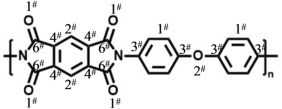Abstract
Polyimide (PI)-MoS2/PTFE composite was fabricated and its tribological properties were investigated under different conditions, i.e., vacuum, ex-situ AO irradiation and in-situ AO irradiation. The friction pair was 400 C ball on the disk of this composite. By using SEM, AFM, XPS and angle-resolved XPS, the characterizations of morphology, topography and chemical components at the sliding interface were studied comprehensively. Because the effects were just limited into the very top surface, the ex-situ AO irradiation didn't deteriorate the tribological properties. Nevertheless, in-situ AO irradiation persistently interfered the formation of shear layer at the track and transfer film at the scar as the sliding was proceeded, which resulted in severe deterioration of the tribological performance. It was determined there were negative synergistic effects between friction and AO irradiation, which suggested in-situ friction under AO environment was more scientific and practical for the investigation of exposed lubricants in LEO.

Keywords Plus:FRICTIONMOS2SURFACELUBRICATIONORIENTATIONMECHANISMSDISULFIDECHEMISTRYOXIDATIONEROSION
Published in TRIBOLOGY INTERNATIONAL,Volume183;10.1016/j.triboint.2023.108437,MAY 2023


